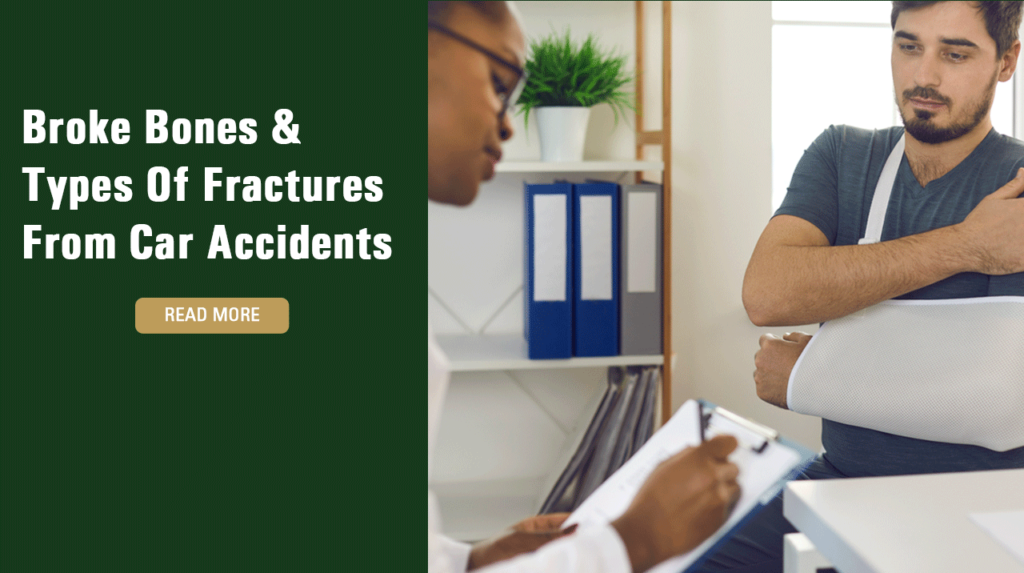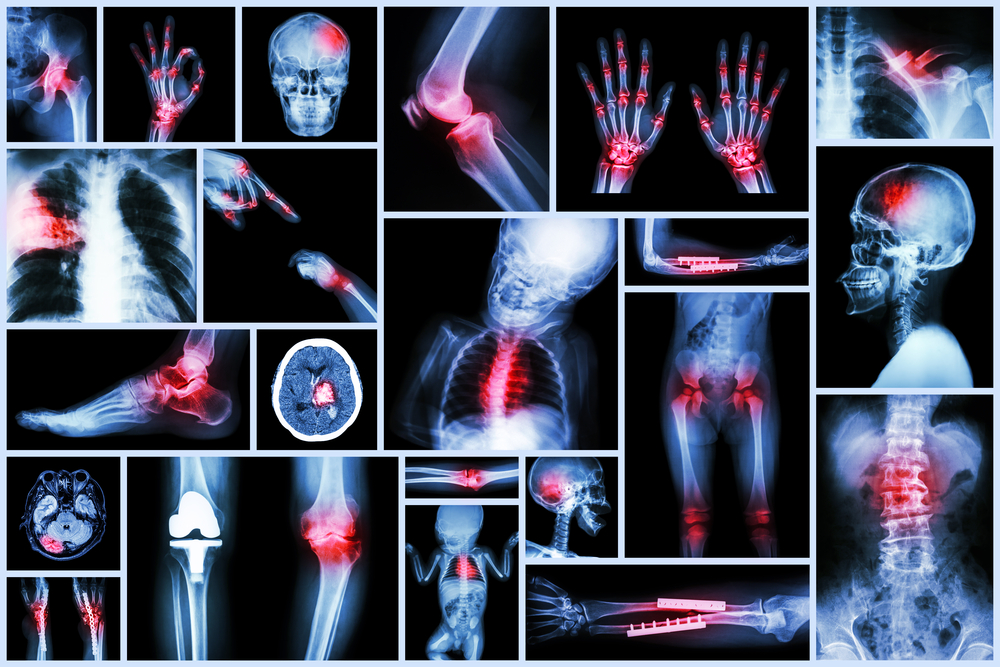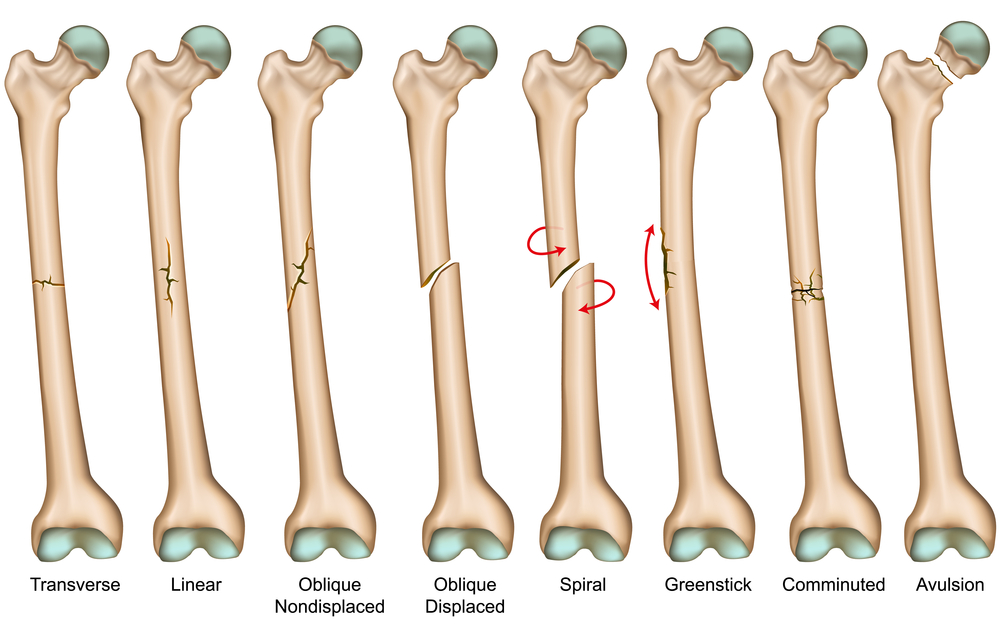Broke Bones & Types Of Fractures From Car Accidents

Motor vehicle collisions in Pennsylvania can cause multiple types of injuries, including broken bones. The injuries you might suffer will vary in severity based on the speed at impact, your position in the car, whether you were wearing a seatbelt, and others. After you have been in a motor vehicle accident, you should see a doctor immediately to be evaluated for injuries. One of the most common types of injury that you might suffer in a serious car crash is a fracture. Since you have more than 200 bones in your body, fractures can happen in multiple ways with varying symptoms. Here is some information about fractures in a collision from the Philadelphia car accident attorneys at Raynes & Lawn.
Causes of Fractures in Motor Vehicle Collisions
There are several ways that bones can break in car accidents. Some of the common ways people can suffer fractures in motor vehicle collisions include the following:
- Not wearing a seatbelt and being ejected from the vehicle
- Being thrown off a motorcycle and striking the pavement
- Being crushed in an accident with a large truck or having a motorcycle fall on you
- Instinctively reaching forward to try to brace yourself for the impact of a collision
- Being struck by loose objects in your car or the airbag
- Slamming hard into your seatbelt or steering wheel

Common Bones Fractured in Accidents
While any bone can break in an accident, the most common areas in which people might suffer fractures are detailed below.
Arm Bone Fractures
Your arms include three primary bones, including the humerus in the upper arm and the radius and ulna in the lower arm. A fracture can happen to any of these bones when you try to brace yourself in a collision by instinctively reaching out in front of you. Fractured bones in the arm are common in car accidents and typically heal with casting.
Wrist Bone Fractures
Your wrist is made up of numerous small bones that are fragile and can easily break. You might suffer wrist fractures in an accident when you attempt to brace yourself or if your wrist is caught and crushed by something. Fortunately, fractures to the bones of the wrist typically heal faster and easier than many other types of fractures.
Fractures of the Tibia or Fibula in the Lower Leg
Your lower leg contains the tibia and fibula bones. They are susceptible to fractures in a motorcycle wreck or a car accident when a portion of the vehicle caves in and traps the legs between the dash and floor. The severity of the fracture might depend on the force and type of impact on your leg. These fractures typically can heal with casting. In some cases, you might need surgery and physical therapy.
Fractures of the Femur Bone
Your femur is the long bone that runs from your knee to your pelvis and is the strongest in your body. However, it can be fractured in a serious car wreck. Femur fractures might occur when you brace for impact or when the car crumples around you. Since the femur is thick, it takes much longer to heal than other fractured bones.
Collarbone or Clavicle Fractures
The clavicle is fragile and easily broken. This bone connects at the shoulder and goes across your chest. Your seatbelt can cause your clavicle to break in a car accident. Because of its location, a clavicle bone can’t be placed in a cast. Instead, your doctor might place your arm in a cast to prevent you from moving too much and recommend physical therapy to aid the healing process.
Fractures of the Ribs
You can suffer rib fractures in several ways in a car accident, including by an impact on an airbag, your seatbelt, or the steering wheel. Doctors can’t place a cast around broken ribs. Instead, you will probably be told to rest and be careful when you move to allow the bones to heal. In severe cases, a doctor might recommend surgery.
Back Fractures
In a head-on or rear-end accident, fractured vertebrae and discs are common. Most of these types of fractures can heal with the use of a back brace, rest, and physical therapy, but surgery might sometimes be needed to repair the bones and surrounding soft tissues.
Hip Fractures
Your hip is a joint through which your thigh bone connects to your pelvis. Hips can be fractured in car accidents or falls. Since the hip is a complex structure, you might require immediate surgery to hold the bones in place with plates or screws and physical therapy to help you regain mobility.
Fractures of the Pelvis
Pelvic fractures are more common in motorcycle crashes, but they can happen in car crashes. If you suffer a pelvic fracture, you will likely need bed rest and physical therapy to heal.
Skull and Facial Fractures
Skull and facial fractures are most common when someone fails to use a seatbelt and strikes their head on the windshield during an accident. Severe skull fractures might cause brain damage and other complications.

Types of Fractures
There are multiple ways a fracture can happen. Some of the most common types of fractures in car crashes include the following:
- Avulsion – A fracture that causes the bone to separate from your ligaments and tendons and will likely require surgical repair.
- Bone buckle – This type of fracture typically happens in young children whose bones are still growing when the bone starts to break but instead buckles or bends.
- Comminuted fracture – This occurs when a bone breaks into three or more pieces and typically occurs with the application of a significant force. Comminuted fractures often can’t be repaired and require amputation of the affected limb.
- Compound fracture – A compound fracture occurs when the bone breaks and pokes out through the skin. Compound fractures are serious and require immediate surgery and antibiotics to prevent infections.
- Hairline fractures – A hairline fracture is a small break in the bone. In some cases, a victim might believe the pain is caused by bruising, allowing the crack to continue running until treatment is sought.
- Oblique fractures – An oblique fracture is a diagonal break of the bone that can be caused by the bone being held in place and then twisted upon impact. An oblique fracture will typically require surgery to reset the bones and hold them in place with screws.
- Stress fractures – These fractures typically occur in young children and are similar to bone buckles. In stress fractures, one side of the bone fractures while the other side buckles. Stress fractures typically require immobilization of the affected limb with a cast, boot, or splint.
- Transverse fractures – A transverse fracture occurs when a bone is broken into two pieces. In most cases, the bones will break at a 90-degree angle. Transverse fractures might require surgery and immobilization.
Diagnosis of Fractures Following Car Wrecks
Doctors use multiple methods to diagnose fractures and then create tailored treatment plans for the victim’s injuries. If a fracture is suspected, your doctor will ask you questions about your accident and injuries and thoroughly examine you for signs and symptoms of fractures, including the following:
- Bone protruding through the skin
- Inflammation and swelling
- Bruising
- Obvious deformity
- Severe pain
Your doctor will likely order imaging studies, including an x-ray or CT scan. A CT scan might be ordered if your doctor believes you have a fracture that doesn’t appear on an x-ray.
Seek Immediate Medical Treatment
Whether or not you think you are injured, you should see a doctor immediately after an accident. Some injuries show delayed symptoms, and the bruising and pain you might be experiencing could indicate a fracture. You should seek immediate care to obtain a proper diagnosis and appropriate treatment. If you fail to see a doctor immediately after an accident or say that you don’t believe you were injured, it will be more difficult for you to recover compensation in an accident claim. Once you receive medical care, your next step should be to contact a car accident lawyer in Philadelphia at Raynes & Lawn. Retaining a lawyer early in the process might help you preserve crucial evidence so that you can build a stronger case and recover full compensation.
Talk to an Experienced Lawyer
If you suffered fractured bones in a car accident, you will likely face a long period of recovery. If your accident and injuries were caused by another driver, you should speak to an experienced lawyer at Raynes & Lawn about your rights to pursue compensation for your losses. Call us today for a free case evaluation to learn more about your legal options and the remedies that might be available at 1-800-535-1797.

For the general public: This Blog/Website is made available by the law firm publisher, Raynes & Lawn, for educational purposes. It provides general information and a general understanding of the law but does not provide specific legal advice. By using this site, commenting on posts, or sending inquiries through the site or contact email, you confirm that there is no attorney-client relationship between you and the Blog/Website publisher. The Blog/Website should not be used as a substitute for competent legal advice from a licensed attorney in your jurisdiction.
For attorneys: This Blog/Website is informational in nature and is not a substitute for legal research or a consultation on specific matters pertaining to your clients. Due to the dynamic nature of legal doctrines, what might be accurate one day may be inaccurate the next. As such, the contents of this blog must not be relied upon as a basis for arguments to a court or for your advice to clients without, again, further research or a consultation with our professionals.